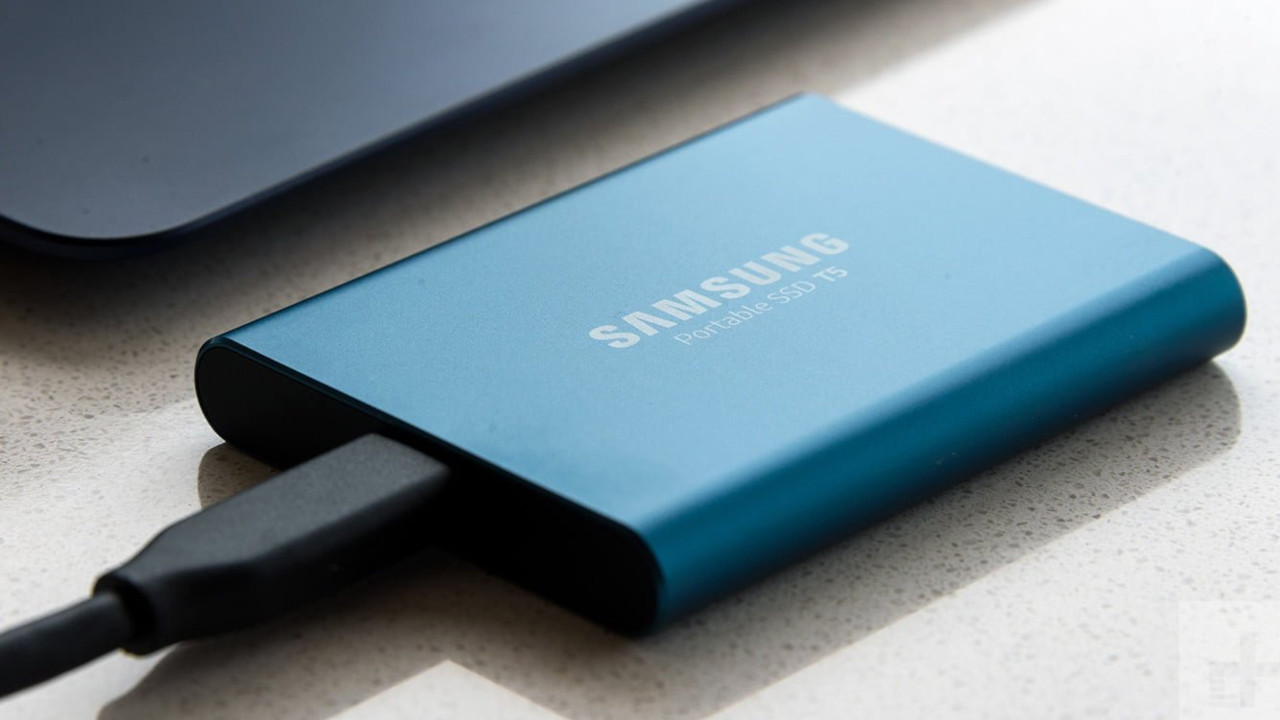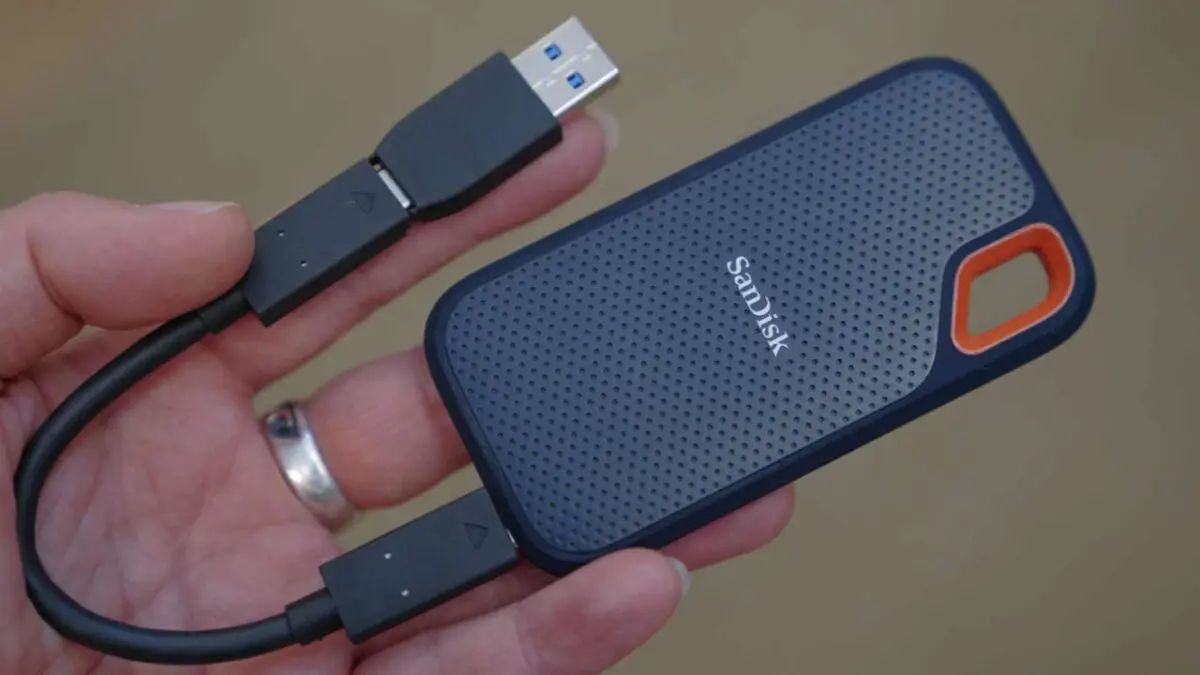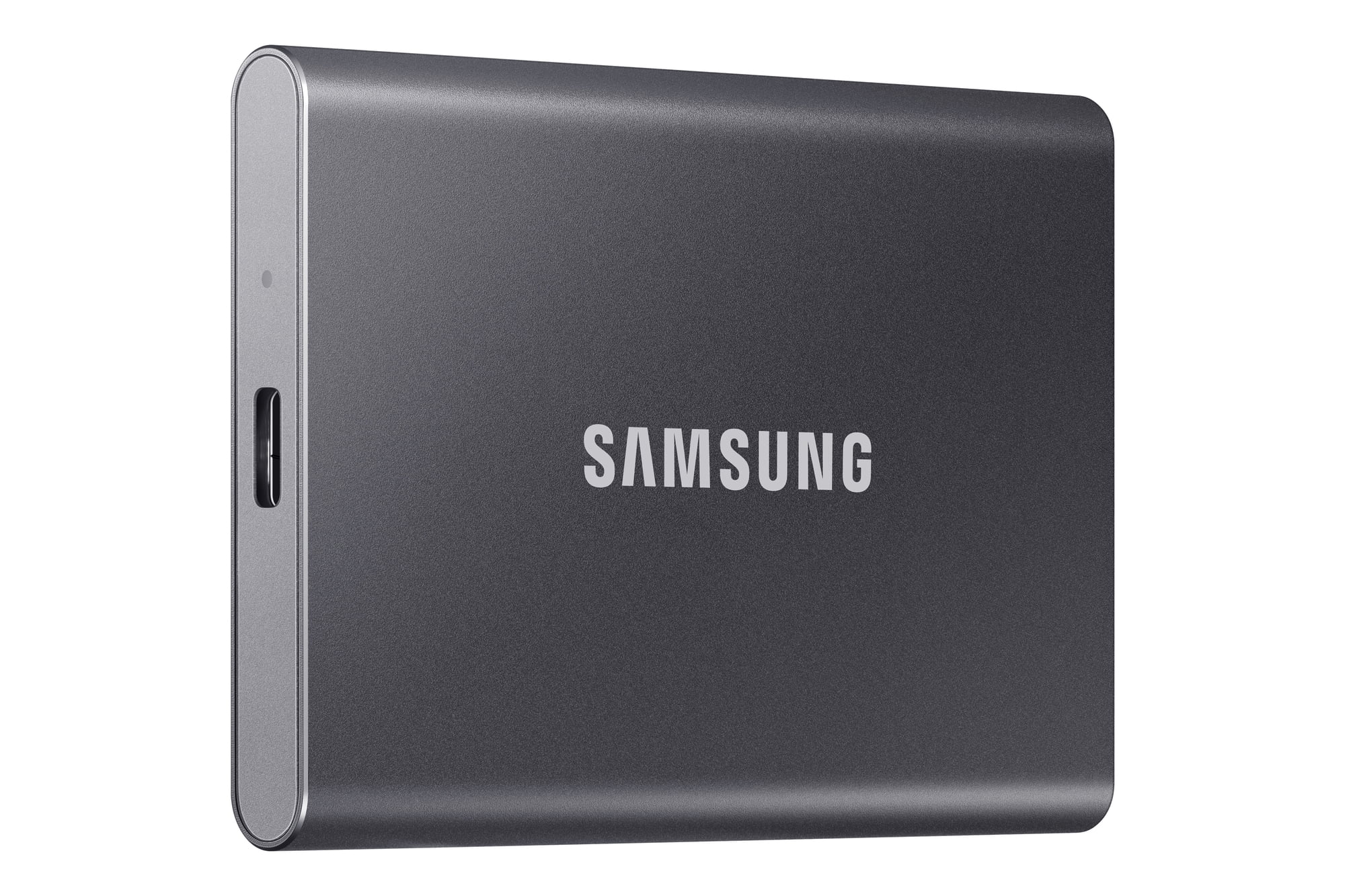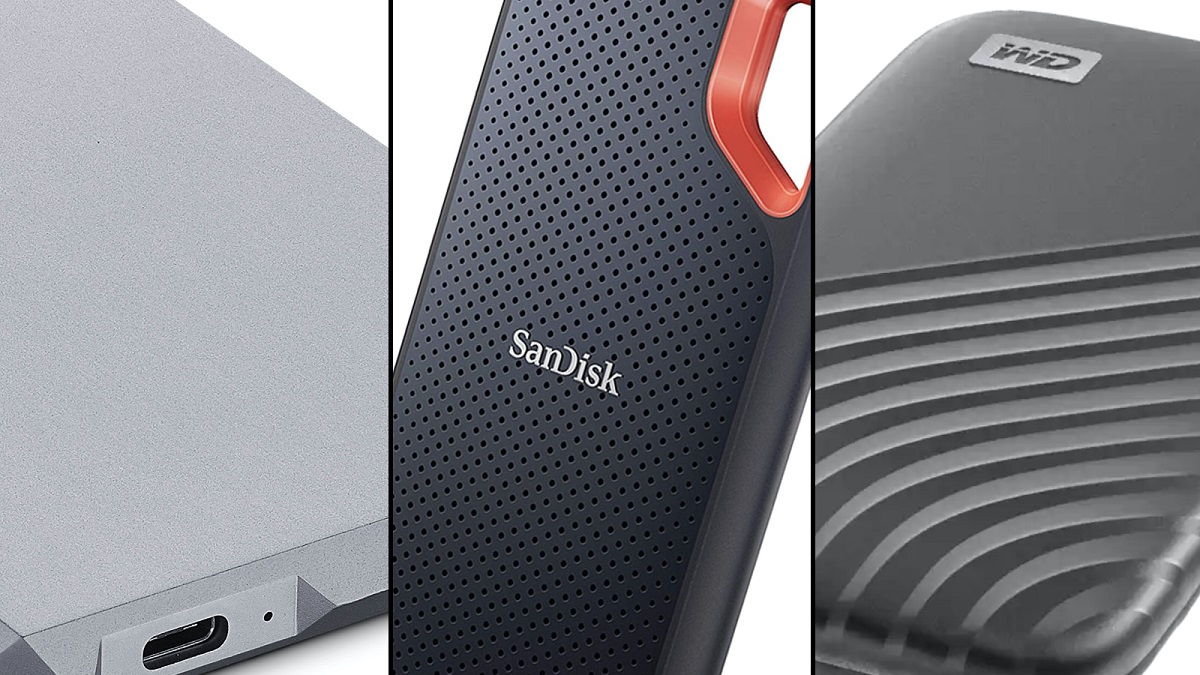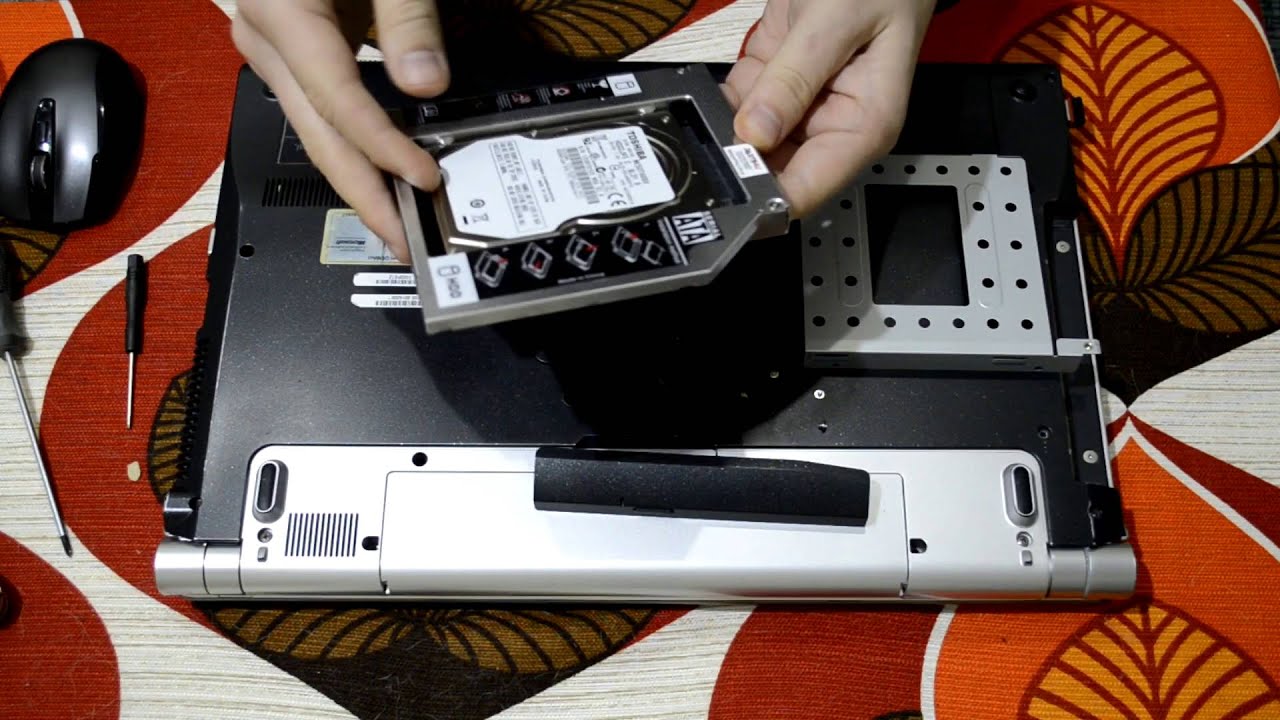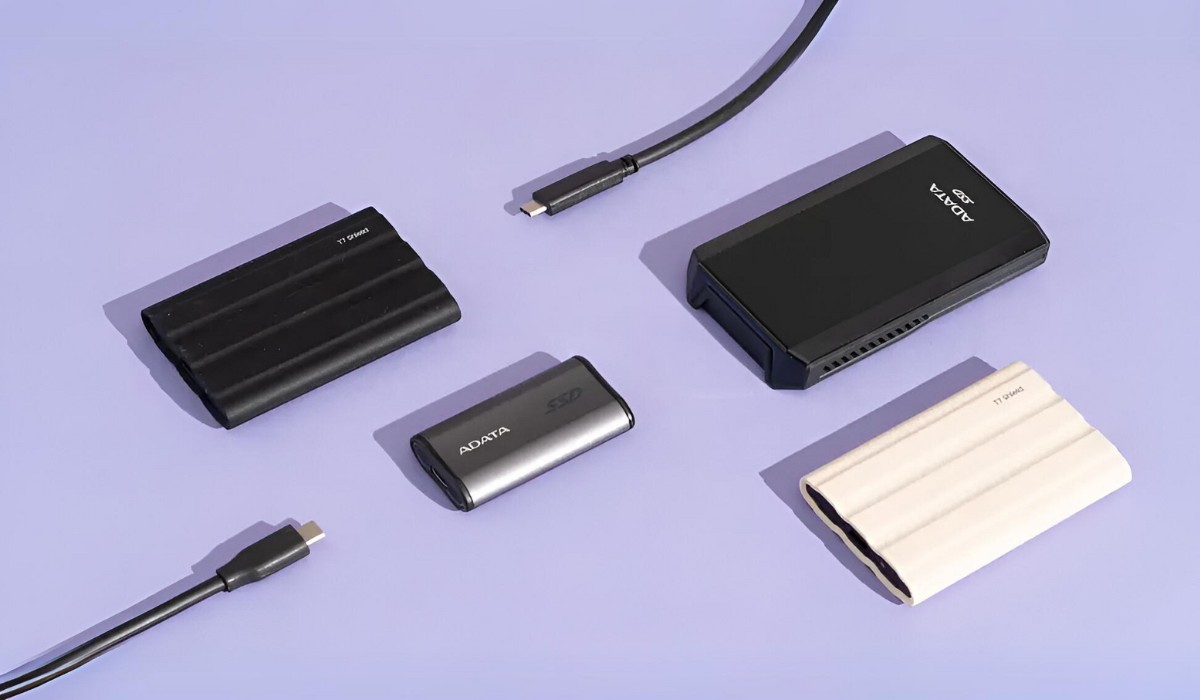Introduction
Welcome to the world of external solid-state drives (SSDs). In this digital age, where data storage and transfer have become integral parts of our lives, having a reliable and efficient storage solution is crucial. An external SSD is a portable device that offers lightning-fast speeds, ample storage capacity, and enhanced durability. Whether you are a student, creative professional, or a businessperson on the go, an external SSD can revolutionize the way you store and access your data.
Gone are the days of relying solely on traditional hard disk drives (HDDs) that are prone to physical damage and sluggish performance. With an external SSD, you can experience faster data transfer rates, improved file access times, and enhanced overall system performance. In this article, we will explore the intricacies of external SSDs, providing you with a comprehensive understanding of their benefits and how they work.
Unlike internal SSDs that are installed inside your computer or laptop, external SSDs offer a convenient plug-and-play solution for expanding your storage capacity or backing up your important files. Whether you need additional space for your growing multimedia collection, want a reliable backup solution for your important documents, or require a portable storage device for your work files, an external SSD can meet all your needs.
By utilizing the latest solid-state technology, external SSDs are designed to offer superior speeds and reliability compared to traditional HDDs. With no moving parts, SSDs can access and transfer data at a much faster rate, reducing the time it takes to load applications or transfer large files. Furthermore, external SSDs are shock-resistant, making them ideal for individuals constantly on the move or working in rugged environments.
In this article, we will delve into the inner workings of external SSDs, explore the various benefits they offer, discuss key factors to consider when choosing one, and highlight popular brands in the market. Whether you are a tech-savvy individual looking to upgrade your storage solution or a beginner in the world of external drives, this article will provide you with the necessary information to make an informed decision.
Definition of an External Solid State Drive
An external solid-state drive (SSD) is a portable storage device that utilizes solid-state technology to store and access data. Unlike traditional hard disk drives (HDDs), which use spinning platters and mechanical read/write heads, external SSDs rely on flash memory chips to store data. These flash memory chips enable faster data access times, enhanced durability, and a smaller form factor.
External SSDs are designed to be connected to computers, laptops, or other compatible devices via USB or Thunderbolt ports. They are typically small, lightweight, and easily transportable, making them an ideal choice for individuals who require a portable and high-speed storage solution.
The primary benefit of an external SSD is its superior performance. Compared to HDDs, SSDs offer significantly faster data transfer rates, allowing for quick file transfers and reduced wait times when accessing stored data. This improved performance is attributed to the absence of moving parts in SSDs, which eliminates the need for a spinning disk and mechanical read/write heads.
Another noteworthy feature of external SSDs is their durability. Without the mechanical components found in HDDs, SSDs are less susceptible to damage from physical shocks and vibrations. This makes them a reliable option for individuals who frequently travel or work in challenging environments.
Additionally, external SSDs offer larger storage capacities than ever before. With advancements in flash memory technology, it is now possible to find external SSDs with capacities ranging from a few hundred gigabytes to multiple terabytes. This enables users to store and carry a substantial amount of data, including high-quality photos, videos, music, and documents.
The compact design of external SSDs also contributes to their appeal. These drives are often sleek and slim, ensuring they can easily fit into backpacks, laptop bags, or pockets. This portability allows users to carry their important files and data with them wherever they go, without the bulk and weight associated with traditional HDDs.
In summary, an external solid-state drive is a portable storage device that combines high-speed performance, enhanced durability, and large storage capacities. By utilizing solid-state technology, these drives offer faster data transfer rates, increased reliability, and a smaller form factor. Whether for personal or professional use, an external SSD is a valuable tool for those seeking a reliable and efficient storage solution.
How an External Solid State Drive Works
To understand how an external solid-state drive (SSD) works, it is important to grasp the basics of solid-state technology. Unlike traditional hard disk drives (HDDs), which use spinning platters and mechanical read/write heads, SSDs utilize flash memory chips to store and retrieve data. This solid-state technology is what makes SSDs faster, more reliable, and more energy-efficient than HDDs.
At the heart of an external SSD are NAND flash memory chips. These memory chips are divided into cells, each capable of storing a certain amount of electrical charge. To write data, an electric charge is applied to the appropriate cells, altering their charge state and storing binary information. To read data, the SSD reads the electrical charges stored in the cells, converting them back into usable data.
One significant advantage of SSDs over HDDs is their lack of moving parts. HDDs rely on spinning platters and mechanical read/write heads to access and store data. In contrast, an external SSD has no moving parts, which eliminates mechanical failures caused by physical shock or wear and tear. This makes SSDs more durable and less prone to damage.
The absence of moving parts also contributes to the faster performance of SSDs. Since an SSD does not have to wait for a physical read/write head to move to the correct location on a spinning disk, data transfer rates are significantly higher. This results in faster boot times, quicker file transfers, and improved overall system responsiveness.
An essential component of an external SSD is the controller. The controller manages the data flow between the computer and the NAND flash memory chips. It translates the requests from the computer into instructions that the SSD can understand, then passes the data to the appropriate memory cells. The controller also performs functions such as error correction, wear leveling, and garbage collection, ensuring optimal performance and longevity of the SSD.
To connect an external SSD to a computer or other compatible device, it typically uses a USB or Thunderbolt interface. These interfaces facilitate high-speed data transfer between the SSD and the computer, enabling fast access to stored data. The choice of interface depends on the compatibility of the SSD with the device and the desired data transfer speed.
In summary, an external SSD functions by using solid-state technology, specifically NAND flash memory chips, to store and retrieve data. This technology eliminates moving parts, resulting in faster performance, enhanced durability, and improved energy efficiency. The controller manages data flow and performs vital functions, while the USB or Thunderbolt interface facilitates quick and seamless connection to compatible devices.
Benefits of Using an External Solid State Drive
Using an external solid-state drive (SSD) offers a myriad of benefits, making it a preferred choice for individuals seeking fast, reliable, and portable storage solutions. Let’s explore some of the key advantages of using an external SSD.
First and foremost, speed is one of the most significant benefits of an external SSD. With no moving parts and advanced solid-state technology, SSDs can deliver significantly faster data transfer rates compared to traditional hard disk drives (HDDs). This means you can quickly transfer large files, load applications faster, and experience snappier system performance overall. Whether you’re transferring high-resolution videos, editing large graphic files, or running resource-intensive applications, an external SSD can greatly enhance your productivity by reducing wait times.
Another advantage of external SSDs is their enhanced durability. Unlike HDDs that have spinning platters and mechanical read/write heads, SSDs have no moving parts, making them less prone to physical damage caused by shock or vibration. This durability makes them perfect for students, professionals, and travelers who are constantly on the move or working in rugged environments. You can have peace of mind knowing that your important data is safe and secure even in demanding conditions.
Portability is another key benefit of using an external SSD. These drives are typically compact, lightweight, and easy to carry, making it convenient to take your data with you wherever you go. Whether you’re a photographer, videographer, or business professional who needs to access and transfer files on the go, an external SSD offers a portable storage solution that fits into your pocket or bag. Connect it to any compatible device, and you have instant access to your files and data without the need for an internet connection.
The energy efficiency of external SSDs is also worth noting. SSDs consume less power than HDDs since they do not have to spin any disks or move mechanical parts. This not only helps to extend the battery life of your laptop or portable device but also reduces the environmental impact by conserving energy. With an external SSD, you can enjoy efficient and eco-friendly storage.
Data security is a crucial aspect of any storage solution, and external SSDs excel in this area as well. Many external SSDs come with built-in encryption options, ensuring that your sensitive data remains secure even if the drive falls into the wrong hands. Additionally, SSDs are less prone to data corruption and file fragmentation, reducing the risk of data loss or data access issues.
In summary, the benefits of using an external SSD are clear. Faster data transfer rates, enhanced durability, portability, energy efficiency, and data security are just a few advantages that make external SSDs a popular choice among professionals, students, and everyday users. Whether you need to store and access large files, transfer data quickly, or work on the go, an external SSD is a reliable and efficient storage solution that offers outstanding performance and convenience.
Factors to Consider When Choosing an External Solid State Drive
When selecting an external solid-state drive (SSD), there are several important factors to consider to ensure you choose the right drive that meets your specific storage needs. Here are some key factors to keep in mind when making your decision.
1. Storage Capacity: Determine how much storage capacity you require for your data and files. Consider the types of files you typically work with, such as documents, photos, videos, or games, and choose an SSD with sufficient capacity to accommodate your needs.
2. Data Transfer Speed: Look for an SSD with fast data transfer speeds to ensure quick file transfers and efficient performance. Consider the interface options available, such as USB 3.0, USB-C, or Thunderbolt, and choose a drive that offers the fastest transfer speeds compatible with your device.
3. Reliability and Durability: Assess the durability and reliability of the external SSD. Look for features such as shock resistance, temperature resistance, and solid build quality to ensure the drive can withstand the rigors of daily use and protect your data.
4. Portability: Consider the size, weight, and form factor of the external SSD, especially if you need the drive for on-the-go use. Opt for a compact and lightweight drive that is easy to carry or fits into your bag without adding unnecessary bulk.
5. Encryption and Security: If data security is a concern for you, choose an external SSD that offers encryption capabilities. Look for built-in encryption features, password protection, or hardware-level encryption to safeguard your sensitive data.
6. Compatibility: Ensure that the external SSD is compatible with your computer or device. Check the operating system requirements and verify if the drive is compatible with the interface and connection options available on your device.
7. Price: Consider your budget and compare the prices of different external SSD models. Keep in mind that higher storage capacities and faster transfer speeds generally come at a higher cost, so find a balance between your storage needs and budget.
8. Warranty and Customer Support: Look for an external SSD that comes with a warranty to protect your investment. Additionally, research the manufacturer’s reputation for customer support and check user reviews to ensure prompt and reliable assistance if any issues arise.
By carefully considering these factors, you can choose an external SSD that aligns with your storage requirements, performance expectations, budget, and overall needs. Taking the time to research and compare different options will help you make an informed decision and find the best external SSD for your specific use case.
Popular Brands of External Solid State Drives
When it comes to choosing an external solid-state drive (SSD), there are several reputable brands on the market that offer high-quality and reliable storage solutions. Let’s take a look at some popular brands known for their exceptional external SSDs.
1. Samsung: Samsung is a leader in the SSD industry, offering a wide range of external SSDs with impressive performance and reliability. Their SSDs are known for their fast data transfer speeds, excellent durability, and advanced features like hardware encryption. Samsung’s Portable SSD T series and X5 Thunderbolt 3 SSDs are highly regarded by professionals and enthusiasts alike.
2. SanDisk: SanDisk, a subsidiary of Western Digital, is well-known for its storage solutions, including external SSDs. SanDisk SSDs offer a good balance of performance and affordability. Their Extreme Portable SSD series is popular among users who need rugged and portable storage that can withstand harsh conditions.
3. Crucial: Crucial, a brand by Micron Technology, is respected for its reliable and cost-effective SSDs. They offer a variety of external SSDs that deliver fast performance and come in compact and lightweight designs. The Crucial X6 Portable SSD is a popular choice for those seeking affordable yet high-performance storage.
4. Western Digital: Western Digital is a well-established brand that produces a wide range of storage solutions, including external SSDs. Their My Passport SSD series is known for its sleek design, fast data transfer speeds, and reliable performance. Western Digital SSDs often come with encryption options and provide ample storage capacities to meet various needs.
5. Seagate: Seagate is a trusted name in the storage industry, offering external SSDs that combine speed, reliability, and affordability. Their Seagate Fast SSD series is favored by users who require fast and reliable portable storage for large files, such as multimedia professionals and gamers.
6. ADATA: ADATA is a recognized brand in the SSD market, offering a range of external SSDs that provide competitive performance and value for money. ADATA SSDs are known for their compact designs, fast transfer speeds, and durability. The ADATA SE800 and SD600Q series are popular choices among users who prioritize affordability without compromising performance.
7. Transcend: Transcend is known for its high-quality storage devices, including external SSDs. Their SSDs offer reliable performance, fast data transfer speeds, and rugged designs. The Transcend ESD230C and ESD250C series are well-regarded for their durability, compact size, and affordability.
It’s important to note that this is just a selection of popular brands in the market, and there are other reputable manufacturers offering excellent external SSD options. When choosing a brand, consider factors such as performance, durability, features, and customer support to ensure you find the best external SSD that meets your specific needs and preferences. Reading reviews and comparing different models can also help you make an informed decision.
Conclusion
In conclusion, external solid-state drives (SSDs) have revolutionized the way we store, transfer, and access data. With their lightning-fast speeds, enhanced durability, and compact design, they offer immense benefits to individuals and professionals in various fields.
By utilizing solid-state technology, external SSDs provide faster data transfer rates, improved system performance, and reduced loading times for applications and files. With no moving parts, these drives are more robust and resistant to physical damage caused by shock or vibration. This makes them ideal for individuals who are always on the move or working in challenging environments.
Portability is another significant advantage of external SSDs. Sleek and lightweight, these drives can easily fit into your pocket or bag, allowing you to carry your data wherever you go. Whether you’re a photographer, videographer, or business professional, having instant access to your important files is crucial in today’s fast-paced world.
Furthermore, external SSDs offer large storage capacities, allowing you to store a vast amount of data, including high-resolution photos, videos, music, and important documents. This makes them perfect for content creators, students, and professionals who need ample space to accommodate their growing digital collections.
When choosing an external SSD, it’s important to consider factors such as storage capacity, data transfer speed, durability, portability, encryption options, compatibility, and price. Evaluating these factors will help you make an informed decision and find the external SSD that best suits your unique storage needs.
Popular brands such as Samsung, SanDisk, Crucial, Western Digital, Seagate, ADATA, and Transcend offer a wide range of external SSDs, each with its own set of features and advantages. Researching their offerings and reading customer reviews can help you find the right brand and model that aligns with your requirements.
In conclusion, an external solid-state drive is a valuable investment for anyone seeking fast, reliable, and portable storage solutions. Its numerous benefits, including speed, durability, portability, and large capacities, make it an essential tool for storing and accessing data across various devices. Whether for personal use, professional tasks, or multimedia creation, an external SSD is a worthwhile addition to your tech arsenal.







